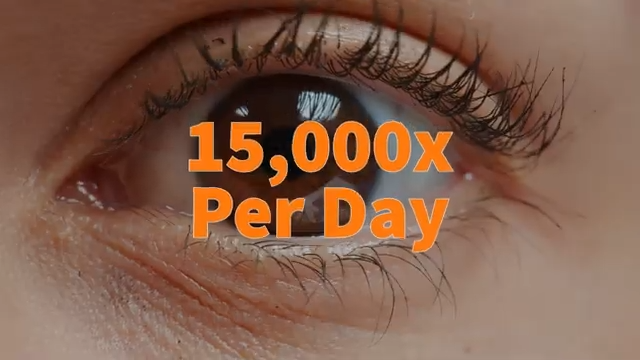Jonathan Zager, M.D., FACS, Professor of Surgery at Moffitt Cancer Center and Director of the Regional Therapies Program tells us about a new procedure to treat ocular melanoma.
Interview conducted by Ivanhoe Broadcast News in July 2016.
Tell me a little bit about how common ocular melanoma is or uncommon?
Dr. Zager: It’s pretty uncommon actually; there are about 2,000 new cases of ocular melanoma or UV melanoma diagnosed in the United States every year; so it’s a pretty uncommon malignancy.
Can you explain a little bit about how this occurs and what are some of the symptoms which (interrupted by doctor)?
Dr. Zager: The symptoms are usually visual changes and it occurs by the pigmented cells in the retina changing into a malignancy into melanoma just like the pigmented cells in your skin would change into a melanoma.
Is there anything that causes it, is sun or?
Dr. Zager: It might be related to sun; however, the etiology is largely unknown, it’s not like you get major sunburns on your retina, but some people do claim that increased sun exposure without sun glasses constantly could potentially increase your risk. However, I don’t think that that’s proven.
How is it treated?
Dr. Zager: Well, it depends on the size of the tumor. The primary tumors can be laser ablated, they can be treated with radioactivity and radiation, or you could have enucleation taking out the entire eyeball.
Tell me a little bit about the statistics involving ocular melanoma traveling to the liver?
Dr. Zager: About fifty percent of all ocular melanoma patients are going to have metastasis where it spreads and about eight percent of those patients that have metastasis it spread only to the liver at least as the first step. There’s something about ocular melanoma that spreads only to the liver for the vast majority of patients.
What is PHP?
Dr. Zager: PHP is also known as, Percutaneous Hepatic Perfusion, and it’s a way of isolating the liver with numerous catheters. These catheters are placed in the femoral artery and femoral vein; we are able to block off the liver with balloons, and we perfuse the liver with high dose chemotherapy. The chemotherapy doesn’t get into the rest of the body, we filter the chemotherapy laid in blood outside the body and then the clean blood is returned to the patient through another catheter in their neck. So it’s a way of isolating the liver, saturating it with very high dose chemotherapy, cleaning the chemotherapy blood, cleaning the blood of all its chemotherapy, and then re-introducing the blood back to the patient.
Who’s a candidate for this?
Dr. Zager: Patients are candidates usually with good liver functions, meaning that there’s not so much tumor that their liver has started to fail. If they have liver disease that is not receptacle, meaning that there’s too many lesions in the liver that I can’t go in there and just cut it out. Then I can diffuse the entire liver. The vast majority of ocular melanoma patients have too much disease that we can’t take care of it with surgery.
Is PHP turning out to be considered a breakthrough treatment?
Dr. Zager: Well, I think it is a breakthrough treatment. We recently completed a phase III trial a couple of years ago and we have another phase III trial, called the focus trial, that is ongoing right now that is taking patients with ocular melanoma to the liver and randomly assigning them either therapy PHP vs, best alternative care and we are going to look at what procedures are better. Either the liver perfusion, the Percutaneous Hepatic Perfusion, or best of alternative care; so I do think it is a breakthrough procedure and these patients do very well from their procedure.
How many times does the patient do PHP?
Dr. Zager: We usually do it up to six times at every eight week interval or so, and we keep on going on to the second, and third, and fourth, fifth and six procedure as long as they’ve tolerated the previous procedure well, they’ve overcome any toxicities and there’s no progression of disease in the liver. Obviously, if the liver disease progresses or it gets worse after the PHP, we are not going to try another one because it just doesn’t respond to the procedure.
When will the clinical trial be completed?
Dr. Zager: About 30 months. We have already randomized a few patients and I’m the lead PI on the trial and we have already randomized two patients here and we have a few more that are candidates that are undergoing screening right now. There is about another 20 sites across the world that are going to come on board for the clinical trials. We are anticipating about being fully accrued in about 30 months. The clinical trial will be completed in about 30 months. We are currently accruing patients here at Moffitt and I’m the lead PI on the trial and there’ going to be about 30 other centers across the world that are going to be participating in the trial.
Is there anything else you think that the public should know about PHP?
Dr. Zager: I just think that the public should be aware that PHP exists, that we have a clinical trial that exists and the earlier we see these patients before they have other therapies there is potential that PHP might be more effective. Meaning if the disease burden is less rather than going through other therapy, potentially having the disease progress on other therapies, if we could get to see these patients earlier, I think we would have a good opportunity to help more patients.
Do patients’ with ocular melanoma have anything in common, for example, have they all had Lasik surgery?
Dr. Zager: No, there’s no tie between Lasik surgeries, or other common factors in patients that have ocular melanoma.
What is usual, if someone is diagnosed with ocular melanoma, what is there typical prognosis?
Dr. Zager: If the ocular melanoma is localized to the eye, the prognosis is good. However, these patients tend to have metastatic disease, not weeks or months; but it could be years even up to a decade after their primary ocular melanoma is diagnosed. We routinely follow these patients with serial ultrasounds or some other imaging of their liver. The prognosis changes to from good to poor if the liver disease does come and if they do have metastatic spread at some point in their lifetime.
Once it spreads to the liver do you usually, is it usually fatal?
Dr. Zager: Historically the overall survival was about a year or less but now with newer therapies, especially, with PHP, we think we are improving that overall survival.
Is there anything else you would like to add?
Dr. Zager: No, that’s it.
END OF INTERVIEW
This information is intended for additional research purposes only. It is not to be used as a prescription or advice from Ivanhoe Broadcast News, Inc. or any medical professional interviewed. Ivanhoe Broadcast News, Inc. assumes no responsibility for the depth or accuracy of physician statements. Procedures or medicines apply to different people and medical factors; always consult your physician on medical matters.
If you would like more information, please contact:
Nancy Gay
Public Relations
Sign up for a free weekly e-mail on Medical Breakthroughs called
First to Know by clicking here.




